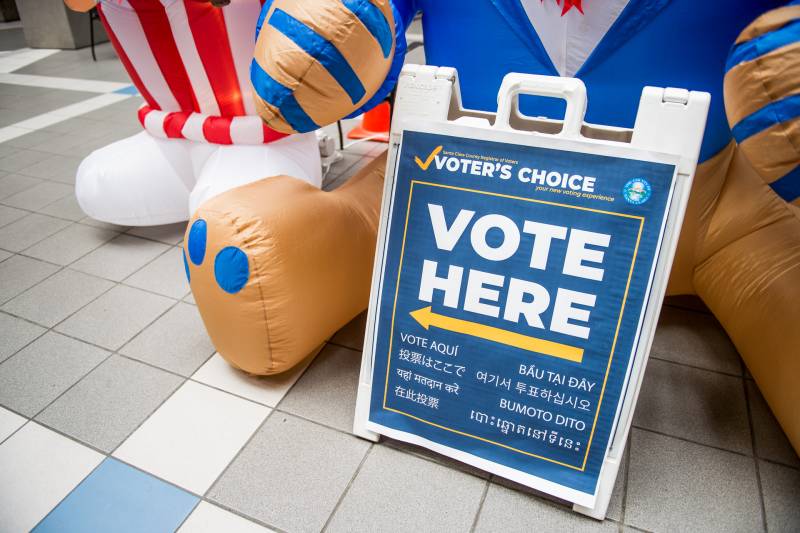And many schools, another traditional site for voting, are unable to commit to serving as polling places because they’re still not sure if they will reopen by Election Day.
Holland said Santa Barbara will have 25 voting locations in November, down from 86 during the March primary. The remaining locations will act as ‘vote centers,’ providing extra services like on-site registration and ballot assistance. Santa Cruz and Stanislaus are among the counties taking a similar approach.
Finding new sites hasn’t been easy or cheap, Holland said, who’s renting out three hotel ballrooms at a cost of $6,000 each.
“We’re going to see very high turnout,” he said. “Now we have to put this on in the middle of a pandemic and do it in a way that we’ve never done before. That’s a lot of risk.”
The transition could prove easier in the 15 counties that already switched to a ‘vote center’ model in previous elections — including Napa, San Mateo and Santa Clara counties — where many of the polling sites are large enough to provide for physical distancing.
“It hasn’t been as much of a challenge,” said April Bracamonte, Santa Clara County’s Election Process Supervisor, noting that the county is close to its goal of securing 100 vote centers. “The facilities are concerned and want to have a lengthy conversation, but we haven’t had any resistance.”
Other counties are turning to unique solutions in their attempt to find safe voting sites.
Last week, Sacramento County announced that Golden 1 Center, home of the Sacramento Kings, will be converted into a gigantic vote center for 10 days before the election. And San Francisco is moving its large City Hall voting site outdoors, in front of the adjacent Bill Graham Auditorium, to reduce crowding.
Meanwhile, Chukchansi Park, the minor league baseball stadium in Fresno, will serve as a phone bank for election workers to answer voters’ questions, said Brandi Orth, the Fresno County registrar of voters.
Orth, the president of the California Association of Clerks and Election Officials, called the process of finding sites a “tremendous undertaking.”
But she said one silver lining was the tens of millions of dollars in new election funding available to counties, including $65.5 million from the federal budget and CARES Act, that allows counties to use the funds to lease polling facilities.
“The one nice thing is there’s money available, and that hasn’t always been the case,” Orth said. “So that’s a welcome relief.”

